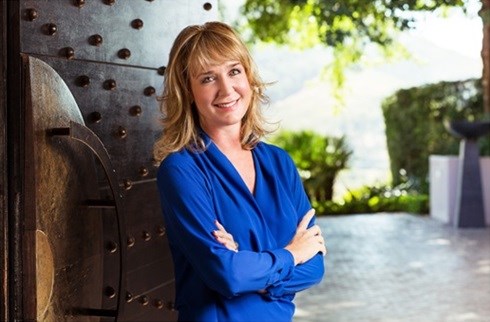Brandy industry salutes excise review

Nhlanhla Nene added that other reforms under consideration include providing excise duty relief to wine-based spirits (eg brandy). The rationale is that brandy is at a cost disadvantage compared with other forms of alcoholic spirits, because it takes 4-5 litres of wine to produce a litre of brandy.
"This is the result of continuous open dialogue between the brandy industry and various Government departments around the unique challenges facing wine producers and cellars," says Christelle Reade-Jahn of the South African Brandy Foundation.
The South African brandy industry has long played a major role in the economy. It is estimated that South Africa is the world's seventh largest brandy producer. While the majority of brandy is consumed within the local market, this industry has also achieved significant export growth although from a relatively small scale. This product of the vine has significant economic relevance.
"The South African brandy industry has a symbiotic relationship with the wine industry, increasing local manufacturing value and stimulating local job creation," adds Reade-Jahn.
The market demand for brandy also has a significant impact on the primary wine producers in South Africa. Recent research by the Bureau of Economic Research (BER) indicated that for every 1% of increase in South African brandy sales volumes, the price of distilling wine to South Africa's grape producers increases by 0.9%.
"A growth recovery of the South African brandy industry will therefore positively influence the overall profitability of South African wine producers, who are significant local employers. The economic value added multiplier for South African brandy has been estimated at 1.30, the government tax multiplier at 1.44 and the employment multiplier at 6.85.
"This shows that for every R1 million increase in the demand for brandy, economic value added in the economy will increase by R1.3 million, government tax revenue from excise and VAT will increase by R1.44 million and 6.85 jobs will be gained. The economic growth potential from a world class local product such as South Africa's brandies is substantial."
The cost of producing a brandy to South Africa's high standards was far higher than that of spirits produced from grains or sugar cane. "Grapes are a more expensive raw material compared to maize or sugar cane. South Africa's legal requirements for the production of brandy are superior to most other brandy-producing countries. This gives the industry the ability to produce brandies of world class quality."
For more information, go to www.sabrandy.co.za.
Ends 461 words
Monique Roux of Manley Communications
0861 626 539, monique@publicity.co.za www.manleycommunications.co.za
From: Manley Communications [mailto:monique=publicity.co.za@cmail2.com] On Behalf Of Manley Communications
Sent: Friday, February 27, 2015 10:00 AM
To: retailnews@bizcommunity.com
Subject: BRANDY INDUSTRY WELCOMES IMPROVED UNDERSTANDING OF KEY CHALLENGES








